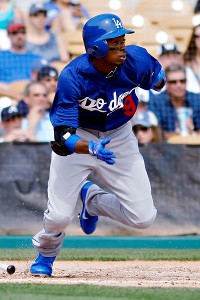jumpmanfromdabay
Banned
- 25,730
- 2,900
- Joined
- Jan 25, 2008
so Ready for Opening Day

Follow along with the video below to see how to install our site as a web app on your home screen.

Note: this_feature_currently_requires_accessing_site_using_safari
Verlander, Halladay, Stras, Garza, Rivera, Marmol, Bell.Originally Posted by dland24
Draft night!!!!






Verlander, Halladay, Stras, Garza, Rivera, Marmol, Bell.Originally Posted by dland24
Draft night!!!!






Originally Posted by Proshares
Nah, Miggy 1st then Pujols at 2.



Originally Posted by Proshares
Nah, Miggy 1st then Pujols at 2.



 AP Photo/Mark DuncanDon't expect Asdrubal Cabrera to repeat his 2011 power surge.
AP Photo/Mark DuncanDon't expect Asdrubal Cabrera to repeat his 2011 power surge.





 Rick Scuteri/US PresswireDee Gordon's speed is a huge asset for the Dodgers.
Rick Scuteri/US PresswireDee Gordon's speed is a huge asset for the Dodgers. AP Photo/Mark DuncanDon't expect Asdrubal Cabrera to repeat his 2011 power surge.
AP Photo/Mark DuncanDon't expect Asdrubal Cabrera to repeat his 2011 power surge.





 Rick Scuteri/US PresswireDee Gordon's speed is a huge asset for the Dodgers.
Rick Scuteri/US PresswireDee Gordon's speed is a huge asset for the Dodgers.I went through Weaver’s career game logs and identified 16 home starts made in the day time. One was at 3:30pm, and all the others were at or around 1:00pm. I assumed that the weather was always nice, the sun always bright.
That left 68 other home starts, almost all of which started around 7:00pm. The sample sizes here are different, but I think we have enough to make a comparison. When I put the numbers next to each other, my eyes opened wide. The numbers back up the anonymous Mariners player, and then some.
Code:TimeInningsBattersERABB%K%HR%Contact%Day1134441.516.5%28%1.1%71%Night44418073.005.9%21%2.4%79%
I went through Weaver’s career game logs and identified 16 home starts made in the day time. One was at 3:30pm, and all the others were at or around 1:00pm. I assumed that the weather was always nice, the sun always bright.
That left 68 other home starts, almost all of which started around 7:00pm. The sample sizes here are different, but I think we have enough to make a comparison. When I put the numbers next to each other, my eyes opened wide. The numbers back up the anonymous Mariners player, and then some.
Code:TimeInningsBattersERABB%K%HR%Contact%Day1134441.516.5%28%1.1%71%Night44418073.005.9%21%2.4%79%














Originally Posted by ChampCruThik
Pac, unfortunately I couldn't make the draft for Pro's league and the Miggy pick was auto-selected. Just my luck that I drew the first overall pick also. In fairness, I probably would have taken Albert or Miggy anyway. Thoughts on Salas' fantasy value? Pitched well all last year.
Originally Posted by ChampCruThik
Pac, unfortunately I couldn't make the draft for Pro's league and the Miggy pick was auto-selected. Just my luck that I drew the first overall pick also. In fairness, I probably would have taken Albert or Miggy anyway. Thoughts on Salas' fantasy value? Pitched well all last year.